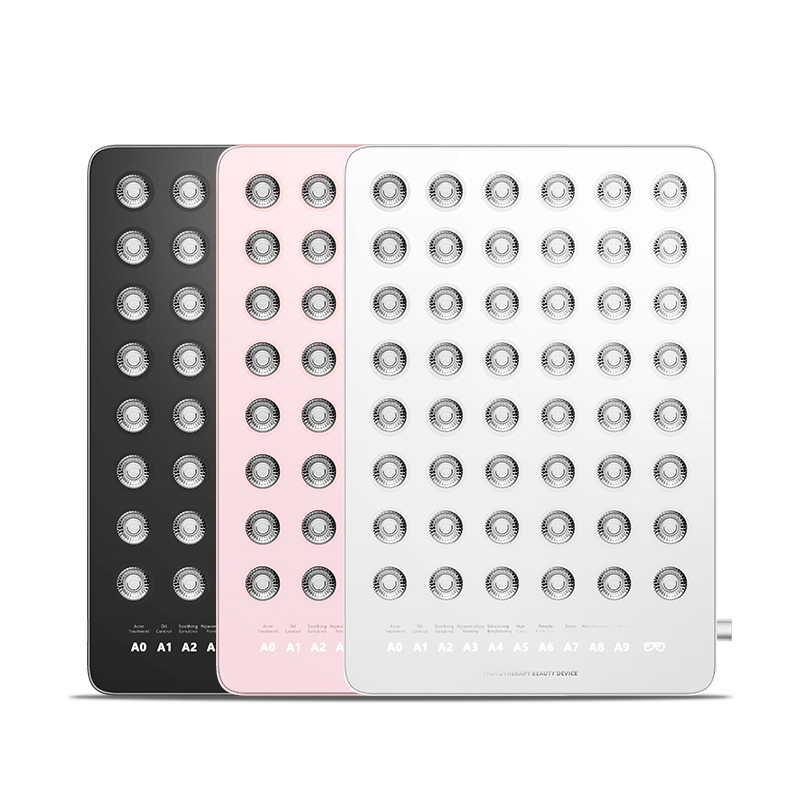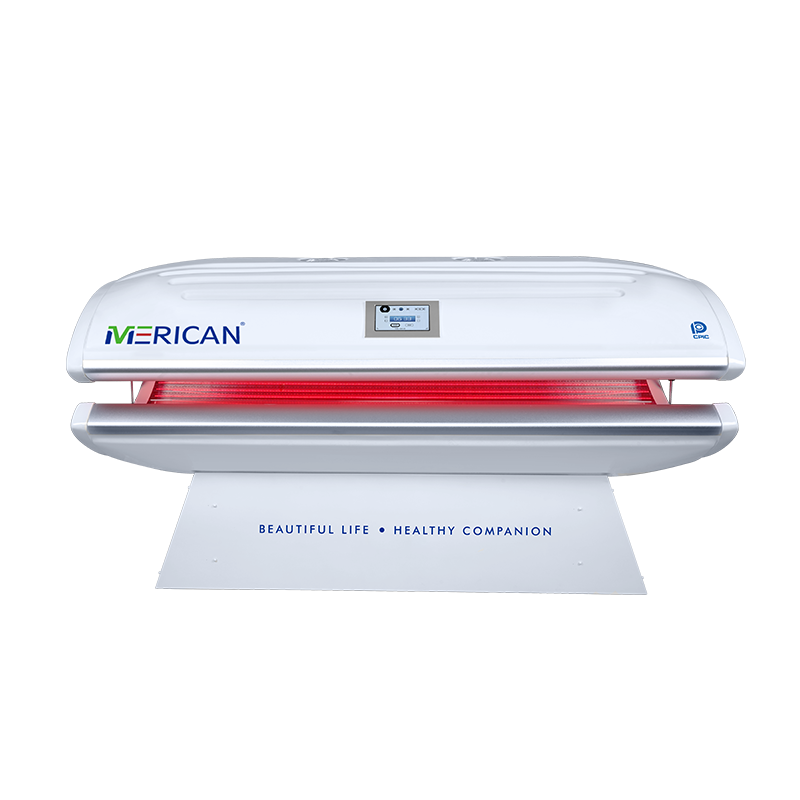過去10年間にわたって, 研究により、赤色光の仕組みと、病気の治療や生活の質の向上における赤色光の潜在的な応用についての理解が深まりました。. 非侵襲的な治療法を想像してください, 手術のように, 複数の医療用途に使用可能, 錠剤や注射で摂取する必要はありません. この潜在的な可能性により、近年赤色光療法の人気が高まっています。.
赤色光療法とは何ですか?
赤色光療法の発見 (RLT) 偶然だった. 博士. 変更マスター, ハンガリーの医師, ラットの腫瘍を治療するために低レベルのレーザー光をテストしようとしていたところ、レーザーを使用した領域の創傷治癒と発毛の改善が観察されました。.
赤色光療法, 歴史的には低レベルレーザー療法または低レベル光線療法と呼ばれていました (LLLT), 光生体調節の一種です (PBM) 治療. Photobiomodulation is the concept of using light energy to change how a cell functions.
Light particles (photons) travel in waves and are described based on the wavelength, frequency of the waves, and the energy they carry. As the frequency decreases, the length of the waves increases, and the energy decreases. Red light has the lowest energy level and longest wavelength within visible light on the electromagnetic spectrum. Lower on the spectrum is infrared radiation, which is not visible to the human eye. The infrared spectrum can be divided into near, middle, and far infrared light. Studies have shown that skin penetration by light increases with an increase in wavelength. Due to this, red light therapy often includes a mix of red light (620–750 nm) そして、近赤外光 (760–1,400 nm) 波長.
While red light therapy started as a laser, the development and subsequent use of light-emitting diodes (LED) has made it more affordable and accessible.

“Sunlight is responsible for the life, エージング, disease, and death of all living things on Earth; all living things depend on light for their survival, and light can be said to be life itself. Thousands of years ago, Hippocrates, the father of ancient Greek medicine, already used sunlight as a means of preventing disease and toning.
The sunlight has been used by Hippocrates, the father of ancient Greek medicine, as a means of disease prevention and conditioning.
Scientific research shows that different wavelengths of light can activate cell activity, promote blood circulation, speed up the metabolism, so that the body, the skin to produce important biological effects and achieve therapeutic repair effects, so that the damaged muscle rejuvenation of health, vitality.
メリカン Light Power Health Cabin, using LED composite light source technology developed byメリカン Light Energy Research Center in cooperation with a German team, through a special filter to get multiple precise wave bands, which has the advantages of large energy, strong penetration and can protect vital organs from damage, 等, and has a better therapeutic effect on the human body.
Under the irradiation of multiple precise wavelength composite light which has been researched and applied for many years by Merican, it can quickly reach the deep tissues in the body (blood vessels, リンパ管, nerve endings and subcutaneous tissues), produce photothermal effect and photochemical reaction, stimulate the activity of fibroblasts and muscle cells, and increase the capacity of macrophages, so that the growth factors are secreted rapidly, thus accelerating the repair of damaged parts, promoting the healing of wounds and bone scabs, and the regeneration of nerve damage, and providing anti-inflammatory, anti-stress, and anti-inflammatory treatment. regeneration, play the role of anti-inflammatory, analgesic, improve the body’s immune function and so on. 同時に, it can stimulate the activity of vascular endothelial cells, promote vascular repair and improve the oxygen-carrying capacity of the blood, thus improving blood circulation and regulating the metabolic balance, and improving the body’s anti-fatigue ability and endurance.
Long-term use not only repairs and protects the metabolism to immune regulation and various cellular processes, but also promotes the recovery of various body functions, reduces the incidence of diseases, alleviates the pain of patients, and maintains the stable state of body functions.”

What is red light therapy used for?
Red light therapy has a demonstrated benefit for several medical and cosmetic uses we will discuss below.
Red light therapy for skin issues
The effect of red light therapy has been studied for several skin concerns as penetration at different wavelengths is possible. In addition to improving cellular function, red light therapy is thought to improve skin health by influencing cell growth and development.

Where can one get red light therapy?
Red light therapy is becoming more popular in professional settings, and you may notice it being offered as an adjunct treatment in:
Gyms for muscle recovery
Dermatology clinics for skin health and aging
Spas for skin rejuvenation and relaxation
理学療法, chiropractic, and orthopedic offices for pain
The benefit of in-office services is that it is usually combined with other treatments, and the devices used are professional grade and generally more expensive.
しかし, in-home red light therapy devices are also widely available. Red light therapy requires consistency to see real benefits, and having a device at home can be much more convenient.In-home red light panels can be used for full body treatment and usually only provide red and near-infrared light. For moretargeted therapy, hand-held devices, マスク, caps, and wraps are also available.
Side effects of red light therapy
Red light therapy has been found to be safe for most. しかし, prolonged and improper use of red light therapy has caused adverse reactions in some people, such as exacerbation of migraines and burns.
While there is ongoing research on RLT for certain eye diseases, there is a risk of permanent damage to retinal tissue with bright light and prolonged exposure to red light. Protective goggles should be worn while using RLT.
Red light therapy shows exciting promise as a multifaceted and non-invasive treatment option for skin health, 痛みの緩和, boosting energy, improving sleep, and supporting brain health. While further research is needed to fully elucidate its mechanisms, it is also necessary to create greater standardization when testing to optimize the potential indications for use. これ, along with more clinical research, will help improve the available evidence and increase accessibility for more people.
よくある質問
Who should not use red light therapy?
赤色光療法はほとんどの人にとって安全に使用できます. でも、がんになったら, てんかん, または光に対する感受性を高めるあらゆる状態, 赤光療法を使用すべきではありません. 妊娠中の腹部や火傷や活動性感染症の影響を受けた部位への赤色光の直接使用も避けるべきです。.
赤色光療法をやりすぎても大丈夫ですか?
赤色光療法を長時間使用すると皮膚に損傷を与える可能性があります. 感度がいくらか上昇するだけかもしれません, しかし重度の場合は火傷を引き起こす可能性があります. 赤光療法は、片頭痛を起こしやすい人に長期使用すると片頭痛を引き起こす可能性もあります. RLT は最初に数分間のみ使用することをお勧めします。, 徐々に露光時間を長くしていきます. 推奨使用時間については、デバイスの説明書を参照してください。.
赤光療法を行うのに最適な時間はいつですか?
赤色光療法を行うのに最適な時間は、あなたとあなたの使用目的によって異なります. 気分を高揚させる効果があり、朝に使用することを好む人もいます。; 夜寝る前にリラックスするために使用する人もいます, 赤色光はメラトニン生成を妨げないため. 赤色光療法は、運動前後の回復に効果的であることがわかっています。. 最も重要なのは一貫性です, したがって、RLT を使用する最適な時期は、スケジュールに組み込めるときです。.
赤色光療法は癌を引き起こす可能性があります?
赤色光療法は、ほとんどの人の組織に損傷を与えるほど強力ではありません, そして癌を引き起こす可能性は非常に低いです. しかし, 誰かがすでにがんを患っている場合, 赤色光療法は推奨されません.


























